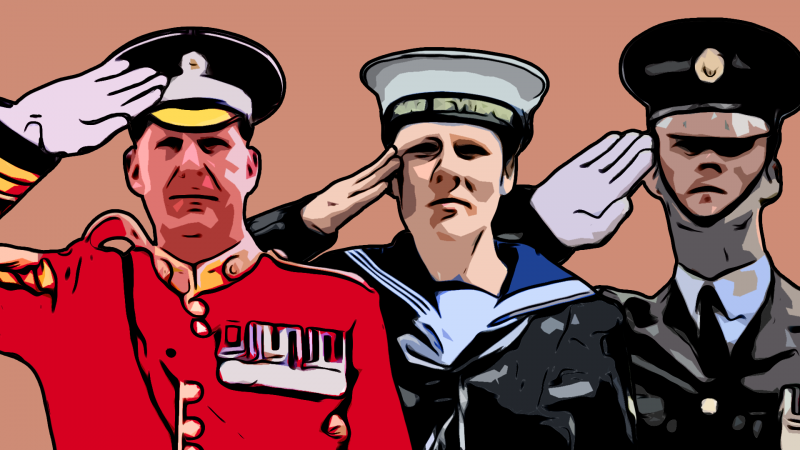What is the Origin of Saluting and Why is the Royal Naval Salute Different to the Army?
In this platinum Jubilee year of Queen Elizabeth II we will see many military parades and salutes to her. But what is the origin of the military salute and why is the Royal Naval salute different to that of the British Army?
An Uncertain Origin
- The salute is often thought to date back to Roman times, but there is no evidence that soldiers raised their hand as a formal greeting.
- Another theory is that it originated in medieval Europe, when knights used their hands to raise their visors, revealing their identity to demonstrate they were friendly. This explanation is also regarded with scepticism.
- It later became British Army tradition for privates and non-commissioned officers to remove their hat to greet officers. Junior officers did the same to their seniors.
This ended in the 18th Century because of concerns over excessive wear to headgear or hats becoming more cumbersome. A 1745 British order book states :
“The men are ordered not to pull off their hats when they pass an officer, or to speak to them, but only to clap up their hands to their hats and bow as they pass.”
British Army & Royal Navy Salutes

The British Army developed a salute with the palm facing outwards, also used by the Royal Air Force.

The Royal Navy (has) palm facing downwards … because many men working on ships had dirty palms… and to display them was disrespectful
The Royal Navy, however, adopted a version with the palm facing in. Why? Because sailors’ hands were generally covered in tar from sails and rigging, and it was deemed unsightly to show an officer or member of the Royal Family a dirty palm, not to mention disrespectful.
But Why Salute At All ?
The salute works both as a mark of recognition for the Queen’s commission awarded to officers and for seniority of rank. It is important that the senior person returns the salute to acknowledge the respect accorded.
The America Salute
The Royal Navy’s form of salute is thought to have influenced the US military, whose version also involves the palm facing downwards.
The different arms of the British Military have very differing ranks so, of course, in order to know if you are saluting a superior or inferior rank you need to know the equivalents between the 4 services (the Marines are the 4th) … see below.







